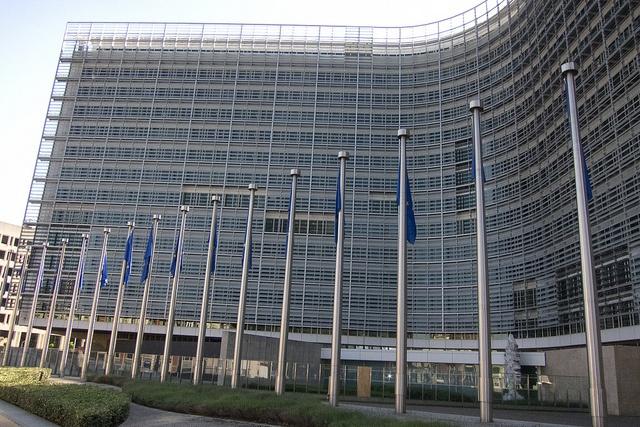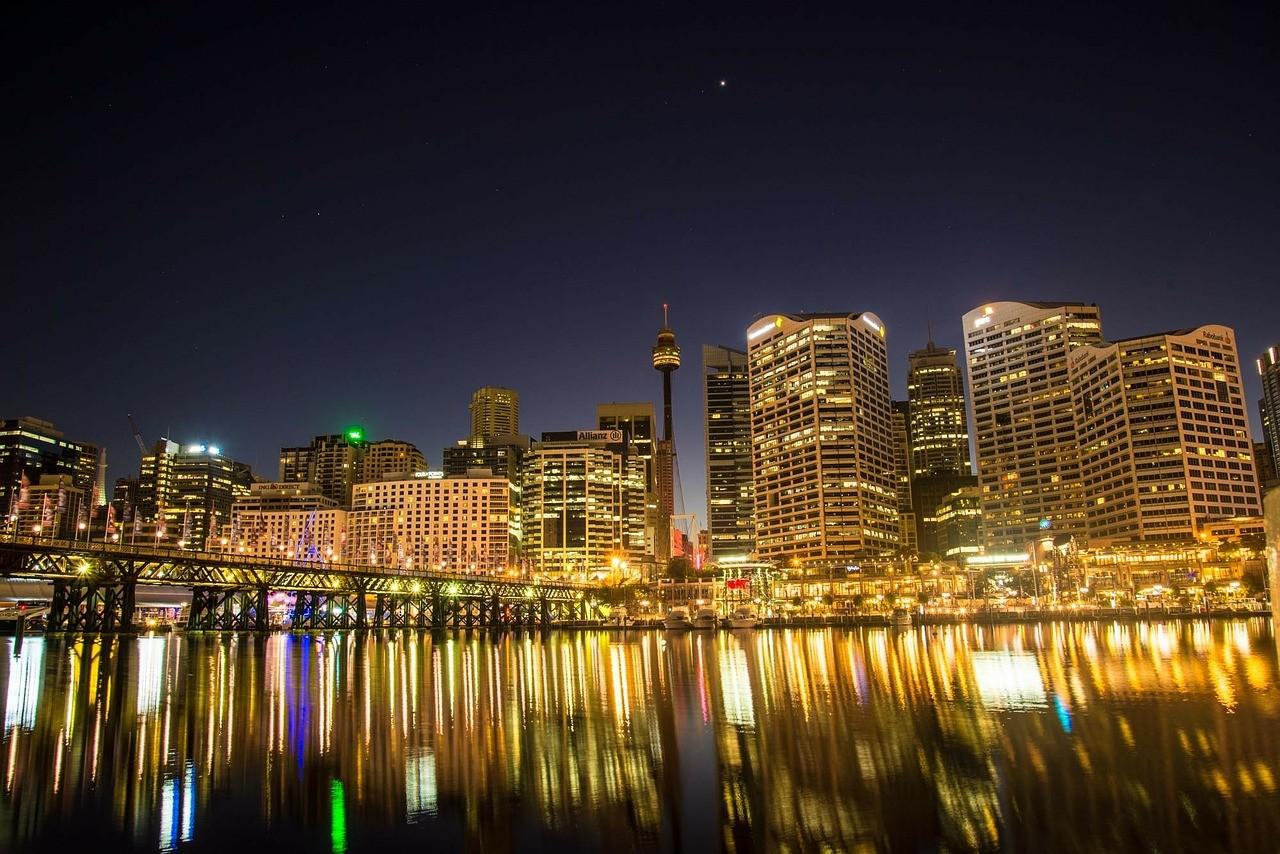The Changing Face of Healthcare: The Pains and the Cures


By Chat Reynders
In this election year, the enormous strain on our healthcare system promises to play center stage in the national conversation. The social implications are tremendous: Reliable healthcare is at risk as the generational tsunami of baby boomers enters the senior years, drug prices skyrocket and Emergency Rooms struggle with capacity. These are daunting trends that lead many investors today to worry that there is no clear path for a better system.
Moving forward, expensive drugs may continue to face headwinds, slower global growth may challenge the earnings of multinationals, and budgets could be tight for technology purchases. But there are encouraging stories of innovations in the healthcare landscape that bring great opportunity for investors to do well and do good.
My firm, Reynders, McVeigh Capital Management, contends that investments supporting access to low-cost, high-quality medication will continue to disrupt the industry. The stage is set for critical advances in areas such as genomics, preventive self-care and modifying the system to the match the preferences of patients.
The new leaders in the space could alleviate the current stress on the system, enabling better interaction among patients, providers, payers and just about everyone. Here’s how.
ER alternatives
The demand for medical expediency has given way to walk-in clinics, led primarily but not exclusively by CVS “Minute Clinics” that offer a new alternative to ERs while delivering more immediate and convenient access to care.
For investors focused on the long game, millennials as a generation are especially embracing this trend. Consider that millennials prefer retail and acute care clinics twice as much as boomers and seniors. As the number of walk-in clinics increase, ER visits will decline in tandem with the trend of delayed care among the younger generations – an alarming tendency, but mendable.
Affordable drugs
The consumerization of healthcare has led to a more informed and empowered healthcare marketplace with a public that has done their homework and demands generic versions of drugs to keep their expenses under control.
Greater competition among these companies will flourish, helping to keep costs lower for patients while increasing their savings. In 2014 alone, the generic drug market saved the U.S. healthcare system $254 billion as part of a $1.68 trillion savings from 2005 to 2014 (.PDF).
Technology and the dawn of “self-care”
The implementation of new technology and the advent of the “self-care” movement have enabled the public to monitor and contain chronic conditions, reduce flare-ups and hospital visits, and ultimately provide people with greater control of their daily health.
In fact, the global market for selected health-monitoring technologies is expected to reach $18.8 billion by 2019. From wearable technology to consumer-friendly testing solutions, the general public is taking ownership of its healthcare – putting less strain on doctors and paying fewer healthcare expenses along the way.
In the final analysis
Improvements in preventive care are an imperative of the evolving global health culture. The population is both increasing and aging, creating a significant need for programs and products that allow patients to proactively manage their health. Companies poised to capitalize on this disruption will bring a new frontier of medicine to communities; and investors should keep a keen eye on these advances.
For more information on the changing face of health care, check out the infographic below (click to enlarge):
Image credit: Pixabay
Infographic courtesy of Reynders, McVeigh Capital Management
Chat Reynders, Chairman and Chief Executive Officer of Reynders, McVeigh Capital Management LLC., has more than 25 years of experience in investment management and social venture investing. He has structured and funded public/private partnerships that have brought more than $150 million in revenues to leading cultural institutions. He has for decades produced socially oriented IMAX films, including the Oscar-nominated Dolphins and Coral Reef Adventure.
COP 21 agreement spurs East Capital to review "high climate change"- related investing risk


by Roger Aitken
The climate agreement sealed at the COP21 summit in Paris on 12 December 2015 underscores, once and for all, that climate change is a common issue that needs to be addressed in a “strong and coordinated manner”, argues Louise Hedberg, Head of Corporate Governance at East Capital Group, an emerging and frontier markets specialist headquartered in Stockholm that manages €2.1 billion (c.US$2.3bn) in assets for international clientele.
As a major achievement on the diplomatic front, which bridges the views of developed and developing nations, the COP21 agreement leaves no nation behind as it provides nearly 200 countries with a global roadmap for accelerating the vital transition to a low-carbon economy.
“It’s now up to national governments to turn goals into real action,” says Hedberg at East Capital, which has offices in Dubai, Hong Kong, Luxembourg, Moscow, Oslo and Tallinn.
“Looking at the Intended Nationally Determined Contributions (INDC’s) submitted in conjunction with COP21, we clearly expect China to demonstrate the most visible leadership for the short term in our investment region,” the Stockholmer adds.
China has already signalled that the environment will take centre stage in its 13th Five-Year Plan, which comprises five key pillars (including confronting Green issues) and runs between 2016 and 2020. Among other things, Hedberg suggests that this will imply “tougher pollution standards, stricter regulation as well as taxes and fines to incentivise corporates to decrease pollution” and increase energy and resource efficiency.
“We also expect to see further clarity on a national carbon trading scheme and initiatives for Green finance. This will fuel growth of China’s clean tech market, which is already the largest in the world,” East Capital’s Corporate Governance head contends.
And, this is touted by the firm as being “clearly supportive” of its recent decision to transform their East Capital China Fund, a €20m (c.US$22m) AUM fund at launch in January 2016, into a thematic environmental strategy.
While the investable universe in their China fund is around 280 companies, East Capital’s portfolio here consists of 50 to 60 liquid and what it views as “attractively-valued” onshore and offshore equities. Two-thirds of the portfolio comprises A-shares with 25% of the overall total high-yield stocks.
In other parts ofEast Capital’s investment region and universe, the firm expects national action to be “less revolutionary” - at least in the short term. “Russia, the fourth largest greenhouse gas emitter, has seen very limited national pressure to act on climate change and its INDC did not surprise on the upside in terms of ambition,” Hedberg says.
She adds: “The climate agreement is nevertheless an additional reason for us to review all our portfolios for unnecessarily high climate change-related investment risk. In particular, we believe that coal will struggle in the new world following COP21.”
In light of the agreement struck in the French capital, East Capital decided to exit the direct coal exposure that they had in their Eastern European fund. “Furthermore, we are benefitting from the underweight in the energy sector (oil & gas) that we have in all our funds,” the Stockholm-based Corporate Governance head explains.
This ‘underweight’ amounted to as much as 19 and 25 percentage points in the firm’s Eastern European and Russian funds, respectively, as of 31 December 2015.
In a concluding remark, Hedberg states: “We also believe the component in the climate agreement requiring nations to be transparent on progress and to ratchet-up national commitments every five years will result in a strong self-regulating effect between nations, creating a moral push for the largest possible climate efforts, eventually also bringing stubborn climate laggards into the fold.”
India wants UK to stay in EU


by Sangeeta Haindl
'Brexit' is a word on everyone's breath, since UK Prime Minister David Cameron announced a referendum on whether Britain should remain in the 28-nation EU to take place on 23 June this year. A referendum is a vote where everyone of voting age gives a "Yes" or "No" answer to a question; whichever side gets more than half of all votes cast will have won.
Eurosceptics believe that if Britain withdraws it would reverse immigration, save the taxpayer billions of pounds and free the country from an economic burden. Others argue that leaving would lead to deep economic uncertainty and cost possibly millions of jobs. There have been a few attempts to quantify what an exit from the EU would do to the size of the UK economy. The Brexit camp says the EU moves too slowly on trade and that Britain on its own would strike deals more quickly. Others warn that Britain, with a population of 60 million people, would go into trade talks in a weaker position on its own than as part of the 500-million strong EU.
America, China and India have made clear that they would be more interested in a deal with the EU than one with Britain alone. While the Federation of Indian Chambers of Commerce and Industry (FICCI) warned that Brexit could harm investment by Indian businesses in the UK Growing trade has been a priority for governments in both countries in recent years; the FICCI statement on the internal affairs of other nations are extremely rare, and a sign of the concern in India.
Therefore, it is worth considering how India would greet Brexit because Indian companies are a larger source of greenfield investment in the UK more than China. A greenfield investment is direct foreign investment, where a parent company starts a new venture in a foreign country by constructing new operational facilities from the ground up. In addition to building new facilities, most parent companies also create new long-term jobs in the foreign country by hiring employees. India is the third-largest source of foreign direct investment into the UK, after France and the U.S., creating thousands of jobs and safeguarding many more, according to the British Department of Trade and Industry last year.
Dr A Didar Singh, secretary general, FICCI, said in a statement, “While deciding on membership of the EU is a sovereign matter for Britain and its people, Indian industry is of the view that foreign businesses cannot remain isolated from such decisions. The UK is a valued economic partner for India and we firmly believe that leaving the EU, would create considerable uncertainty for Indian businesses engaged with the UK and would possibly have an adverse impact on investment and movement of professionals to the U.K.” Referendums are unpredictable, though latest opinion polls show the British public are fairly evenly split. India, along with the rest of the world, is waiting for a decision on 23 June.
Photo Credit:   https://speedpropertybuyers.co.uk/
- See more at: http://www.justmeans.com/blogs/india-wants-the-uk-to-stay-in-the-eu#sthash.vFhDSJoz.dpuf
A measurable impact


Photo by Jordan McDonald on Unsplash
by Frank E. Celli, CEO, BioHiTech Global
Each year, an estimated 133 billion pounds of food that farmers grow never makes it to our plates. Tons of it ends up in landfills, where it emits methane, a greenhouse gas. This is food waste, caused by inefficiencies occurring at every step of the food chain from imperfect agriculture, poor logistics, confusing expiration labeling, spoilage, oversupply and overproduction. Waste also impacts important resources like water and land, and is then ultimately to be discarded without remorse.
As the population grows we will create more waste, and consume and degrade resources faster than they can be replenished. If we are to assume the responsibility of sustainability, meeting the needs of the present generation without compromising the future generations, then we should be working overtime to assure that those resources are available to people in the future, and that we have strategies in place to become more efficient as it relates to waste.
The recycling measures the US takes with materials such as plastic, glass, aluminum and paper have become commonplace, but with food waste, only a fraction is currently diverted from our landfills. Legislation is gaining momentum with a handful of states and more than a handful of cities casting diversion objectives for the waste to find a more sustainable means for its disposal. But, if we were to shift the focus of food waste away from disposal, instead to its recovery or prevention, then it would no longer be considered a loss.
The recovery of wasted food would recognize that there is still value in the material outside of landfills, which is an important aspect of sustainability. In addition, prevention of even the smallest amount of waste sent to landfills is not only good for our environment, but also creating less waste in any step of the food chain means less money spent on energy, water, and other resources.
In order to achieve an efficient and sustainable system where more food waste would not be landfilled but rather recovered or prevented, companies will need to take a closer look at the waste they create to help them prevent it from the start. However, prevention strategies are impossible to achieve without access to detailed historical waste data.
Waste data up until today has been an urban myth. A curious customer asking to receive the details about what was transported to the landfill might never see that information, and if they did, it would have likely been provided months after the trash left their store, facility, hospital or hotel, etc. Also missing from the information would be the details about what was buried or incinerated. A waste story that has no beginning, middle, end or purpose can’t have a happy ending.
BioHITech Global offers an outcome unique to the waste industry. Our on-site aerobic digester is more than a piece of technology that offers businesses a cost-effective, trouble-free method for the disposal of their food waste. The devil is certainly in the details when it comes to this solution. It’s the cloud-based management tool that serves up real-time waste data that can be accessed from virtually any internet-connected device and is then complemented by its analytics delivering a happy end to wasted resources and food.
There are elements hidden in the details about waste that are important to the success of any prevention strategy. While there are risks and rewards to every strategy, the ones that win must have a measurable impact.
Fossil Fuel Companies Can't Get Away With Dodgy Climate Dealings


Fossil fuel companies just can’t get away with dodgy dealings when it comes to climate change. Recently, a group of attorneys general representing 17 states, Washington, D.C. and the U.S. Virgin Islands said they plan to work together on climate change. That includes investigating whether oil and gas companies misled the public and investors about the impacts of climate change on their businesses.
Four of the state attorneys (New York, California, Massachusetts, and the U.S. Virgin Islands) are specifically investigating ExxonMobil. Two of the states involved in the lawsuits, New York and California, launched investigations the end of last year to see if ExxonMobil failed to report climate change risks to shareholders and lied to the public about climate change.
“Our offices are seriously examining the potential of working together on high-impact, state-level initiatives, such as investigations into whether fossil fuel companies have misled investors about how climate change impacts their investments and business decisions,” New York State Attorney General Eric Schneiderman said in a statement.“Climate change has real and lasting impacts on our environment, public health and the economy,” added Attorney General Kamala D. Harris in a statement. “California has been a national leader in fighting to reduce greenhouse gas emissions, and I am proud to join this effort to preserve and protect our natural resources for future generations to come.”
Jamie Henn, 350.org strategy and communications director and co-founder, told TriplePundit that the announcement are "nothing short of historic.” The joint work by the state attorneys is “the beginning of the type of multi-state collaboration that brought down Big Tobacco,” Henn told 3p. And if the investigations move forward, “They will have a major impact on the fossil fuel industry and help open up the space for much bolder political action to address the climate crisis,” she added.
ExxonMobil has long known about the risks climate change poses to its business operations. Reports by media outlets, including Inside Climate News and the Los Angeles Times, revealed that ExxonMobil incorporated climate change into its plans and practices in the 1980s and 1990s. At the same time, the company publicly cast doubt on climate science.
ExxonMobil “knew about the threat of climate change and then, just like Big Tobacco, proceeded to fund a massive misinformation campaign to prevent action,” Henn explained. He described the company’s actions as “deplorable.”
But is it criminal? “What Exxon could get nailed with is lying to their shareholders, deceiving the government, or conspiring with other oil companies to manipulate the market or block the deployment of renewable energy,” Henn told 3p. “This may turn out to be like getting the mob for tax evasion. Either way, the political impact will be enormous.”
ExxonMobil and Shell spent millions on obstructive climate policy lobbying
ExxonMobil has contributed much money to obstructing climate change policies, including to lobbyists who deal in climate change denial. And it’s not the only oil and gas company doing so. A recent report by InfluenceMap found that a total of $115 million was spent on obstructive climate policy lobbying by a number of fossil fuel industry entities. That includes ExxonMobil and Shell which spent $27 million and $22 million, respectively.
In addition to their direct spending, ExxonMobil and Shell contributed about $10 million between them to the American Petroleum Institute (API), the Western States Petroleum Association (WSPA), and the Australian Petroleum Production and Exploration Association (APPEA). The API is the “best funded and most consistently obstructive lobbying forces for climate policy in the U.S.,” as the report stated. The API has a budget of over $200 million and about $65 million of it is for “highly obstructive lobbying against ambitious climate policy.” The report estimates that ExxonMobil contributed $6 million and Shell $3 million to API’s obstructive spending.
Despite what InfluenceMap found about the obstructive climate policy spending of ExxonMobil and Shell, both companies acknowledge human-caused climate change on their respective websites. ExxonMobil states: “The risk of climate change is clear and the risk warrants action ... There is a broad scientific and policy consensus that action must be taken to further quantify and assess the risks.” Shell claims that it “has long recognized the climate challenge and the role of energy in enabling a decent quality of life.”
Neither company's actions match up with their claims. That is why ExxonMobil is being investigated by state attorneys. Back in February, three congressional members asked the Securities and Exchange Commission (SEC) to investigate if Shell’s failures to disclose climate change risks to its business operations violated securities laws. In a letter to the SEC, the congressional members said: “As a publicly-traded company, Shell has a duty to follow U.S. securities law ... including disclosure requirements as they apply to business or legal developments relating to the issue of climate change.”
Indeed, fossil fuel companies have a responsibility to disclose climate change risks to their shareholders and to the public.
Image credit: Flickr/MikeMozart
EU Goes After Multinational Tax Avoiders with New Laws


Apple, Google, Amazon, Starbucks and other multinationals will soon be required to disclose how much they make and the taxes they pay in each European state where they do business.
That's the aim of a new proposal put forth by the European Commission. If approved, companies will also be expected to disclose the total figure of taxes they pay outside the European Union.
The proposed laws are the latest fallout from the Panama Papers revelation, which detailed a complex network of tax havens and shady business practices that multinationals, celebrities and a number of global leaders use to hide profits and skirt tax laws. According to financial commissioner Jonathan Hill, however, the new proposals are only part of an ongoing effort by the European Commission to ensure that "taxes are paid where profits are generated."
Corporate tax avoidance costs EU countries $57 billion to $80 billion each year, according to data published by the commission. The European Commission is looking to resolve that problem by requiring corporations to be more transparent in their global business ventures and enhancing information-sharing between EU member states.
"While our proposal on country-by-country reporting is not, of course, focused principally on the response to the Panama Papers, there is an important connection between our continuing work on tax transparency and tax havens that we are building into the proposal," Hill said.
The Panama Papers fallout also prompted the Organization for Economic Cooperation and Development, of which the EU is a member, to intensify its scrutiny of base erosion and profit sharing. Sometimes shortened to BEPS, this basically refers to companies intentionally moving their businesses to countries with lower taxes.
The European Commission is also considering stricter laws regarding BEPS reporting for multinationals, even though countries like Ireland now benefit from BEPS, said EU economic and financial affairs commissioner, Pierre Moscovici. Google, Facebook and Apple are among the multinationals to benefit from tax loopholes that allow companies to pay less in EU taxes by claiming Ireland as a tax-base location.
The new EU legislation may also change how countries are required to treat the public disclosure of such information. The commission considers financial data reporting public, but only for those activities within the EU. Tax data and profits relating to a corporation's activities outside the EU would not be made public.
Some analysts are questioning whether tighter laws on BEPS are actually advisable. British economist and former joint head of the U.K. Government Economic Service, Vicky Pryce, pointed out that some companies chose to locate their businesses abroad for reasons that have nothing to do with taxes.
"Tax havens and offshore finance centers [can also] offer security against volatile regimes," Pryce noted. By being able to set up a company and maintain its financial assets abroad, business owners may be able to protect at least some of their investments from unforeseen changes, like a political coup or civil war. "They also enable companies and individuals to have access to British or other laws operating in offshore finance centers," Pryce continued.
The United States already requires U.S. taxpayers to report certain assets overseas, including "foreign entities in which U.S. taxpayers hold a substantial ownership interest." The Foreign Account Tax Compliance Act (FATCA) became law in 2010.
Image: Flickr/Thomas Quine
Will Uber and Lyft Make Transportation More Sustainable?


A couple of weeks ago, I was leaving a friend’s house in Park Slope, Brooklyn, late at night. The minute I walked outside, I started debating myself: How should I get back home -- train or Uber? The train is cheaper, but then I need to walk to the train station, wait for the train and then walk again from the train station in my neighborhood. Uber is far more expensive, but then I just need to wait a couple of minutes for the car and it will take me straight home.
I chose Uber.
Such experiences shape my belief that Uber, Lyft and other ride-hailing services may evolve into a substitute for public transit for those who prioritize convenience and can afford it. In other words, I see these services as a potential threat to pubic transit, as a growing number of people may start using them instead of taking the bus or the train.
However, I might be wrong, at least according to a new report from the American Public Transportation Association -- which found that shared modes (car-sharing, bike-sharing and ride-hailing services) “complement public transit, enhancing urban mobility.” More specifically, the report suggested that services like Uber and Lyft “are most frequently used for social trips between 10 p.m. and 4 a.m., times when public transit runs infrequently or is not available. Shared modes substitute more for automobile trips than public transit trips.”
The study, which was conducted in seven cities, portrays shared modes in the urban transportation eco-system as an opportunity rather than a threat to public transit, suggesting that the future of urban transportation could benefit from collaboration with private platforms. Therefore, “public transit agencies should seize opportunities to improve urban mobility for all users through collaboration and public-private partnerships, including greater integration of service, information and payment methods.”
It is important to note that this report was not published by Lyft, Uber or an organization connected to these companies but by APTA, an organization that describes itself as a “leading force in advancing public transportation.” So, we could assume this is an objective report (although Lyft is a new member at APTA, according to its website).
Another interesting study that is not finalized yet was conducted by Susan Shaheen, co-director of the Transportation Sustainability Research Center at the University of California, Berkeley. According to the New York Times, Dr. Shaheen is working with NRDC to determine the environmental impact of Uber and Lyft’s car-pooling systems.
While her study is in progress, the early data suggests that “by getting “more butts in seats… car-pooled services may already be reducing traffic, gas use and automobile emissions,” Dr. Shaheen told the New York Times. In other words, her study may also reach a conclusion similar to the APAT report: Ride-hailing services have a positive, sustainable impact on urban transportation systems.
Unlike the APAT report, Shaheen’s upcoming report seems to differentiate between Uber’s and Lyft’s main services (UberX and Lyft) and their car pool services (UberPool and Lyft Line). The latter is definitely more sustainable than the former as you have “more butts in seats.” But I wonder if these shared rides -- which seem, according to Lyft and Uber, to have a growing popularity -- substitute more for automobile trips or public transit trips. Shaheen’s study will provide an answer to this question, the New York Times reports, so we will have to wait and see.
Let’s assume though that the results will support the notion that sharing-economy services like Uber and Lyft take cars off the road and supplement urban public transit rather than substitute for it. If this is the case, should we indeed encourage cities and their public transportation systems to partner with these sharing-economy platforms?
Well, not so fast. There are two main issues cities should address before giving these services a friendly hug. The first is the social impact of ride-hailing services. Both the APAT report and another study conducted in New York show that most of the users of these services are affluent: According to the APAT report, the average household income of respondents was $90,926, and a New York data analysis conducted by FiveThirtyEight suggests that passengers of both taxi and Uber services are "highly concentrated in wealthier areas.”
Public transit is the great equalizer, regularly used by both rich and poor. Even if UberPool and Lyft Line will continue reducing their prices, it will still be unlikely that they will become a feasible alternative for poor people who can barely afford to pay the cost of their bus ride. Therefore, while a continuing expansion of private ride-hailing services could take more cars off the road, it is also important to ask if they will also leave only poor people to use public transit. FiveThirtyEight suggests one scenario, where middle-to-upper income city dwellers will actually use public transit more, not less, as they will shift from car ownership to a more economic combination of ride-hailing services and public transit. But I’m a bit skeptical how realistic this option is.
The second issue is governance. By adopting sharing-economy platforms and helping them play a more significant role in the urban mobility system, cities essentially give them more power and make them part of their fabric. This could become an issue, especially when it comes to companies like Uber -- which has been criticized for a long list of wrongdoings, aggressive tactics and the way it treats drivers, and whose success“comes from being parasitic on the cities in which it operates,” as Tom Slee described in his book "What’s Yours is Mine." To make a long story short: Do you really want to give companies that seem to lack self-governance and put their shareholders first the responsibility for a growing share of your city’s transportation system?
At the end of the day, it could be that evaluating Uber, Lyft and other ride-hailing services through the lens of carbon emissions is just too narrow. It might be the time to consider a broader framework like resilience, using tools such as the Rockefeller Foundation’s City Resilience Framework to figure out if these sharing-economy services actually create a positive net impact in cities.
Image credit: Flickr/James Loesch
Transparency, the Panama Papers and the Future of Sustainable Development


The revelation of the Panama Papers last week is at once both not surprising and deeply disturbing.
Of course it's no surprise that those among the world's most wealthy and powerful people, including top business and government leaders, use whatever means at their disposal to protect their wealth from the vagaries of economic, social and policy constraints. On the other hand, it is a stark reminder of the need to redouble our efforts to align our values with our functioning global economy if there is any hope of achieving our higher aspirations. That's the concept my colleagues here at TriplePundit have encouraged for more than a decade -- that the triple bottom line is the true measure of wealth.
In his work on why civilizations collapse, Jared Diamond cites a core element of risk that has felled past civilizations and now threatens our own: the conflict between the "short-term interest of the elites and the long-term interest of the whole society." These elites, Diamond explains, "correctly see the signal" in the economy to pursue these short-term interests for their own gain, even to the detriment of the society within which their wealth is generated.
I argue that the gap is closing on the long-term consequences from the sole focus on short-term gain. It is my aim over the next few weeks to look at where we are, what we need to do, and what we are already doing to make sustainable development a reality.
Citizen journalism: Exploring sustainable development
Beacon is a crowdfunding platform for journalists. I've just launched a campaign on Beacon to develop a series of articles and interviews with global leaders in government, business and academia at the GRI Global Conference in Amsterdam this May.
This project builds on my work interviewing U.N. advisor Amina Mohammed in September and GRI CEO Michael Meehan while at COP21 in Paris.
We'll look at the Sustainable Development Goals adopted by the U.N. last year as well as the Paris Agreement signed at COP21. We want to examine how these frameworks create a platform for progress not only as aspirational goals, but also by defining steps for real action on the ground -- from economics and governance, to human rights and environmental stewardship. What’s important in this conversation is the evolving role of the private sector and indeed the collaborative efforts of all sectors of society (as reflected in both the Sustainable Development Goals and the Paris Agreement).
The upshot is that growing transparency and information-exchange in both the public and private sector (Panama Papers notwithstanding) and a comprehensive, integrated set of global goals for sustainable development hit a crucial juncture in 2015. But the forces and tendencies for business-as-usual remain strong and will not be easily overcome, especially in the timeframe required to avoid the risks Diamond describes.
TriplePundit has been generous enough to let me tell you about this project, and I am grateful to them for that, as well as the opportunity they've given all of us to engage in this conversation over the years. Please consider offering your support to this project and sharing it with your friends and colleagues.
Image credit: Steven HSVA, creative commons courtesy Flickr
Listen Up! Recycling Can’t Support a Circular Economy Alone


By Elisabeth Comere
The linear take-make-dispose model is no longer viable in the face of rapid population growth, a burgeoning global middle class and the skyrocketing consumption that will inevitably follow. Our resource base is dwindling while greenhouse gas emissions continue to rise. It’s now safe to say that if we continue with business as usual, companies will face an unpleasant future of price volatility, inflation of key commodities and an overall decline, and in some cases, depletion of critical material inputs. This is why businesses are turning to the circular economy to successfully tackle these challenges.
Considerable attention is being paid to capturing resources at the post-consumer stage of the product lifecycle. But even with advanced systems and technology, how practical and realistic is it to truly create a circle that constantly re-uses? How do we address the fact that there will always be a need for at least some virgin material inputs? How do we address the limitations of reusing and recycling? What role can renewable materials and responsible sourcing of raw materials play in addressing these challenges and what role can it play in a circular economy?
Even if the recycling system was perfect, the fact still remains that 100 percent of feedstock cannot come from recycled content alone and we will always rely on a portion of virgin input materials. This is why renewable materials and sustainable sourcing are critical to the circular economy. Certainly value-innovation should ensure that product/packaging is still designed with recyclability in mind because the end-of-life cannot be compromised. The strength of the circular economy model lies in this restorative lifecycle approach and adding renewability to recyclability will create a new leading edge in the evolution of products/packaging.
We should all strive to keep resources in use for as long as possible and regenerate materials and products at the end of their lifecycle, but it is known that we can only recycle something for so long before it begins to disintegrate. Therefore, establishing a genuine circular economy includes capturing the value of resources on the front-end of the lifecycle as well. This can be achieved through renewable materials and sustainable sourcing. What I mean by “renewable materials” is natural resources that can be replenished overtime such as paperboard made from trees or bio-based plastics derived from plants like trees or sugar cane. While some of these are not perfect solutions, they are a step in the right direction.
There are true business and environmental benefits to increasing the use of renewable materials:
- Securing availability and access to raw materials
- Predictable supply of raw materials
- Resilient supply chain to better manage costs
- Reduce climate impacts, preserve biodiversity and natural habitats; keeping the climate in balance
It’s important to acknowledge that, as with any other product, costs are driven by supply and demand. So as renewable bio-based technology becomes more mainstream through supply chain integration, we can expect cost parity with traditional materials. But I must point out: As businesses shift to a circular economy, we must consider changing our traditional way of measuring return on investment. New technologies should be evaluated on ability to preserve natural habitats, grow natural capital and reduce future risk.
Finally, consumers’ interest and demand are driving us to more sustainable practices and products. Demographic trends in consumer behaviors are changing as they become more aware and educated about climate change risks. We at Tetra Pak completed a survey of 1,000 U.S. consumers who make purchasing decisions about groceries, and 86 percent of respondents said if they knew using packaging made with renewable materials contributed to reduced carbon emissions and helped slow climate change, it would impact their choice of product. What this tells us is that we have the opportunity to educate and promote the benefits of renewability to consumers and stress how it can play a significant role in bending the curve towards progress in our efforts to secure sustainable material supplies.
What’s next?
As we transition to a successful circular economy, companies will be looking for raw material alternatives in order to find ways to secure availability and access to materials and remain competitive. During this time of change, we may see a policy and regulatory environment that either hinders — or helps — these practices and technologies emerge.
Image credit: Pixabay
Elisabeth Comere is the Director of Environment & Government Affairs at Tetra Pak. Working out of the United States since 2010, Elisabeth is responsible for advancing Tetra Pak's commitment to sustainability in both the U.S. and Canada and oversees numerous industry and customer packaging sustainability initiatives.
Elisabeth joined Tetra Pak in 2006 as Environment Manager for Europe, where she helped define and drive Tetra Pak's environmental and carton recycling strategies.
Prior to joining Tetra Pak, Elisabeth served as a political adviser to a member of the European Parliament in Brussels, Belgium, and headed the Environment Department of the Food & Drink industry group in Europe.
Elisabeth was educated in France, the United Kingdom and Belgium. She graduated as a lawyer from Law School of Bordeaux University (France) and earned an Environmental Sciences Master from Brussels University (Belgium).
Your Company Could Be Wasting Millions on Printing


By Dale McIntyre
Every large company competing in the global market today is doing what it can to drive growth, reduce costs, and improve information security and supply chain efficiency. However, there’s one frequently overlooked area that serves all of these goals when managed strategically: printing.
That’s right. All of these goals can be addressed by an old technology that we all still employ, but few company leaders ever think about. Printing is expensive, and it’s costing your organization a lot more than you would probably guess. Yet many companies may not even think to look at improving print operations because office printing is so commonly taken for granted. The reality is that an effective print management strategy can help your company make significant sustainability gains and save millions of dollars.
Complexity drives up costs
To understand why it makes sense to approach print management through the lens of sustainability, you first need to see what you’re paying for. If you perform an objective, vendor-neutral assessment of your current printing environment and supply chain, you may be surprised by what you’re spending and where that money is going. One example among many is an excessive variety of printers in the workplace, which can drive up management costs significantly.
By analyzing the number and variety of printers in your organization, you’ll likely identify many opportunities to reduce costs and improve efficiency. In our experience, companies can save 15 to 25 percent on their enterprise printing costs simply by consolidating devices, which also reduces total energy consumption.
In our work with large companies, my firm, Pharos Systems International, has seen fleets of more than 200 different printer models from several manufacturers. This common scenario is often due to a lack of coordination between departments or a policy of buying from whichever manufacturer offers the best deal at the time.
This situation alone dramatically increases the costs of supplies, support and inventory, as each make and model requires different toner/ink cartridges and replacement parts. Add to this the time spent dealing with all of this complexity — and we all know what time equates to: increased labor costs. A thorough, objective analysis can flag these problem areas (and many others).
21st-century print management
Chances are there’s at least one aspect of office printing that’s costing your company more than is necessary in terms of dollars and sustainability metrics. Print data collection can be done via the cloud. Once you’ve gathered all of the data, you can begin to put your data to good use by illuminating these problem areas. To create a sustainable print strategy for your organization, start with these steps:
1. Thoroughly examine your organization's print workflows. When it comes to calculating print costs, your devices are only half the story. A thorough assessment will help you determine how much your employees are printing versus what they actually need to print to satisfy business requirements and workflows. This discovery process is typically straightforward and highly effective. In our experience, we find that companies that don’t attack the demand side of print leave as much as 50 percent of their potential savings on the table.
2. Don’t focus on cost per page alone. Cost per page can be a valuable metric, but it’s less relevant when a company has excess printing capacity and low device utilization rates. At one of our customer sites, we found that 28 percent of printers had produced 200 pages or less within a 30-day period. Such low device-utilization rates equate to a higher total cost of ownership and an increased cost per page. To achieve optimal efficiency and cost savings, you need to have the right ratio of users to devices, high utilization rates of those devices, and a plan to reduce print volumes down to business-critical documents.
3. Go paperless whenever possible. Of course, we all know the best way to reduce waste and save money on printing: Don’t print. The most cost-effective, secure and sustainable document is the one that isn’t printed. Revisit your office workflows to determine where and when creating hard copy is actually necessary, and encourage employees to avoid printing just for the sake of convenience. When employees understand the real cost of printing and the role that reducing print has on your organization’s cost savings and sustainability goals, they will likely be eager to play a positive role in the initiative.
The bottom line
Print management isn’t a sexy or new concept, so it can be easy for company leaders to disregard it. But avoiding the issue could mean wasting as much time and money as you do paper. By taking a step back and completing a thorough analysis of your printing systems, you can cut these hidden costs and make significant progress toward your sustainability goals.
Image credit: Pixabay
Dale McIntyre serves as a vice president at Pharos Systems International, an enterprise print solutions provider based in Rochester, New York. Dale provides strategic leadership in the areas of sustainability, brand, and customer engagement. He regularly shares his unique sustainability perspective on print strategy through blogs, webinars, and appearances.